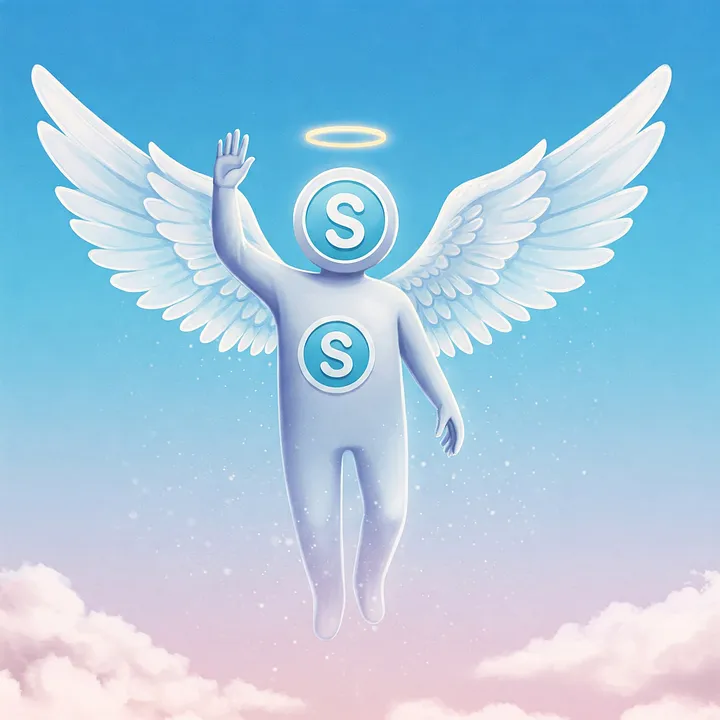
On May 5, 2025, Skype — the pioneering Voice-over-IP (VoIP) platform that redefined global communication for 300 million users — will officially shut down. Let’s learn about it’s origins, the programming languages behind it, P2P networks and more!
Microsoft’s decision to sunset Skype and migrate users to Microsoft Teams marks the closing chapter for a revolutionary tool born from peer-to-peer file-sharing roots.
But how did a platform that democratized free international calls fail to evolve with the times? And what lessons does its retirement offer about the relentless pace of technological innovation?
From Kazaa to Global Calling: The Origins of Skype’s Vision
Skype’s story begins not with voice calls but with Kazaa, a peer-to-peer (P2P) music-sharing platform developed by Estonian programmers Ahti Heinla, Priit Kasesalu, and Jaan Tallinn.
When Swedish entrepreneur Niklas Zennström and Danish developer Janus Friis acquired Kazaa’s technology in 2003, they recognized its potential to disrupt telecommunications.
Their vision? To create “Sky Peer-to-Peer” — later shortened to Skype — a free, decentralized platform for global voice communication
Unlike traditional telecom networks, Skype leveraged P2P architecture to bypass costly infrastructure. This allowed users to make free PC-to-PC calls worldwide, a radical concept in an era dominated by landlines and per-minute international charges.
By 2005, Skype had 1 million concurrent users and facilitated 2 billion free call minutes annually.
Its acquisition by eBay for $2.6 billion that year signaled mainstream validation, even if the partnership later faltered.
The Code Behind the Revolution: C, Pascal, and P2P Architecture
Skype’s technical brilliance lay in its NAT traversal protocol, which enabled seamless connectivity across firewalls — a hurdle earlier VoIP services like Vonage struggled to overcome.
The desktop client relied on C for low-latency audio/video processing and Pascal for its intuitive interface.
These languages provided the efficiency and reliability needed for real-time communication, while the P2P network eliminated centralized servers, reducing costs and scaling effortlessly.
This decentralized model allowed Skype to handle 100 billion call minutes by 2008.
Yet, its codebase — optimized for early 2000s desktop computing — struggled to adapt to the mobile-first world. Competitors like WhatsApp and Zoom prioritized lightweight apps and one-click meetings, leaving Skype’s legacy architecture feeling outdated.
Rise and Fall: Key Milestones in Skype’s 22-Year Journey
- 2003–2006: Disrupting Telecom
Launched during the broadband boom, Skype capitalized on improving internet speeds. By 2006, it introduced video calls — a feature that solidified its dominance. - 2011: The Microsoft Acquisition
Microsoft’s $8.5 billion purchase aimed to integrate Skype into Windows and Xbox. However, overlapping products like Windows Live Messenger created internal confusion. - 2017: Teams Emerges as a Slack Rival
Microsoft pivoted to Teams, prioritizing workplace collaboration with features like threaded chats and document sharing. Skype became the “consumer” counterpart — a distinction that fragmented its user base. - 2020: The Pandemic Missed Opportunity
As Zoom surged with 300 million daily users during COVID-19 lockdowns, Skype’s clunky mobile experience and lack of breakout rooms relegated it to obsolescence.
Lessons from Skype’s Legacy: Adapt or Perish
Skype’s decline offers three critical lessons for tech innovators:
- User Experience Is Non-Negotiable
While Skype pioneered free video calls, its failure to streamline mobile onboarding and feature updates alienated users. Competitors like Zoom prioritized simplicity, offering single-click meeting links and browser-based access. - Decentralization Has Limits
Skype’s P2P model was groundbreaking in 2003 but became a liability as centralized cloud services enabled faster innovation. Modern platforms leverage AI-driven features (e.g., background noise suppression, real-time translation) that demand server-side processing. - Strategic Pivots Require Boldness
Microsoft’s reluctance to fully merge Skype into Teams until 2025 highlights the risks of half-hearted integration. Had Skype rebranded as “Teams Personal” earlier, it might have retained relevance.
AI Integrations: Skype’s Missed Opportunity vs. Teams’ Future
Skype’s AI capabilities were virtually nonexistent — a stark contrast to Microsoft Teams, which now integrates Azure Cognitive Services for speech-to-text transcription, live translations, and AI-powered meeting summaries.
Developers can also build custom chatbots using the Microsoft Bot Framework, enabling automated workflows and data retrieval.
Teams’ AI-first approach positions it as a hub for generative AI tools, such as Copilot, which drafts emails and summarizes chat threads. Meanwhile, Skype’s static feature set couldn’t compete, underscoring the necessity of AI in modern communication tools.
Migrating to Teams: A Step-by-Step Guide for Skype Users
- Data Migration (Available Now)
Sign into Teams using your Skype credentials to automatically transfer contacts and chat history. - Skype Credit Refunds
Use existing credits before May 5, 2025. Microsoft hasn’t clarified refund policies for unused balances. - Explore Teams’ Free Tier
Host up to 100 participants in video calls, collaborate on shared documents, and use AI enhancements like background blur.
Farewell to a Pioneer
Skype’s retirement evokes nostalgia for those who recall the thrill of first free international calls. Yet, its demise reminds us that even revolutionary tools must evolve or face irrelevance.
As Microsoft Teams embraces AI-driven collaboration, Skype’s legacy lives on — not as a platform, but as a catalyst for the connected world we inhabit today.
What communication tool will dominate the next decade? Share your predictions in the comments.
If you liked this content I’d appreciate an upvote or a comment. That helps me improve the quality of my posts as well as getting to know more about you, my dear reader.
Muchas gracias!
Follow me for more content like this.
X | PeakD | Rumble | YouTube | Linked In | GitHub | PayPal.me | Medium
Down below you can find other ways to tip my work.
BankTransfer: "710969000019398639", // CLABE
BAT: "0x33CD7770d3235F97e5A8a96D5F21766DbB08c875",
ETH: "0x33CD7770d3235F97e5A8a96D5F21766DbB08c875",
BTC: "33xxUWU5kjcPk1Kr9ucn9tQXd2DbQ1b9tE",
ADA: "addr1q9l3y73e82hhwfr49eu0fkjw34w9s406wnln7rk9m4ky5fag8akgnwf3y4r2uzqf00rw0pvsucql0pqkzag5n450facq8vwr5e",
DOT: "1rRDzfMLPi88RixTeVc2beA5h2Q3z1K1Uk3kqqyej7nWPNf",
DOGE: "DRph8GEwGccvBWCe4wEQsWsTvQvsEH4QKH",
DAI: "0x33CD7770d3235F97e5A8a96D5F21766DbB08c875"